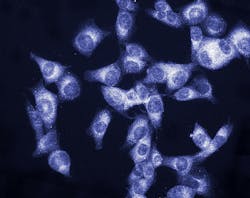About 8 to 10 million Americans over age 40 have an overabundance of cloned white blood cells, or lymphocytes, that hamper their immune systems. Although many who have this condition — called monoclonal B-cell lymphocytosis (MBL) — do not experience any symptoms, a new study shows they may have an elevated risk for several health complications, including melanoma, a form of skin cancer.
The findings, by Mayo Clinic researchers, are published in a new paper in the Journal of Clinical Oncology.
People with MBL fall along a spectrum that spans from a low amount to a high amount of these dysfunctional lymphocytes. Previous research has shown that MBL is a precursor to a type of blood and bone marrow cancer known as chronic lymphocytic leukemia (CLL). People with CLL also have a heightened risk of melanoma.
The findings suggest that having MBL, even at low levels, can serve as a biological signal, or biomarker, for early detection of melanoma, which is increasing worldwide.
Susan Slager, Ph.D. and her research team have been studying the largest available cohort of individuals — more than 7,000 people screened for MBL through the Mayo Clinic Biobank. The researchers have now followed these individuals for about four years and are finding a collection of potentially related diagnoses among those who screened positive for MBL.
In addition to the increased risk of melanoma, the researchers found that people with MBL were also at higher risk of cancers originating in the lymphatic system and hospitalizations due to serious infections including COVID-19.
Advances in flow cytometry, a high-resolution technology that enables researchers to look at cells in the blood and identify their varied physical characteristics, has helped propel this research. Clinicians and researchers can now identify people with MBL, the precursor to CLL, more easily.
People with CLL have a very high number of these identical circulating lymphocytes: more than 5,000 lymphocytes per microliter. (A microliter is about 1/50th of a drop of blood.) That's compared to a person with MBL, who typically has 1-5 of these circulating lymphocytes per microliter of blood. Through more sensitive flow cytometry, scientists can identify people earlier when their levels are still low.

